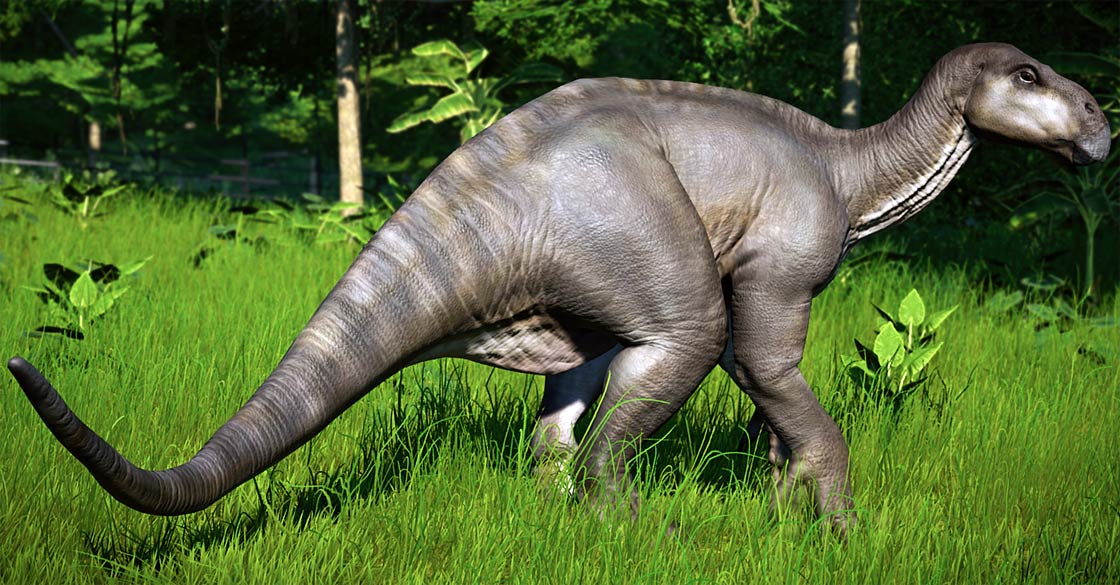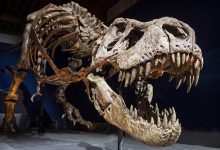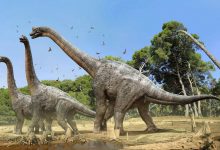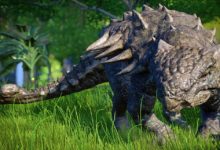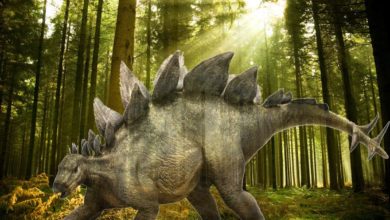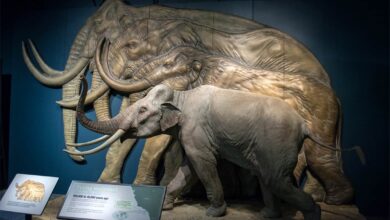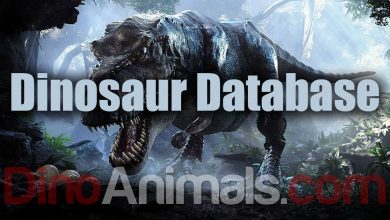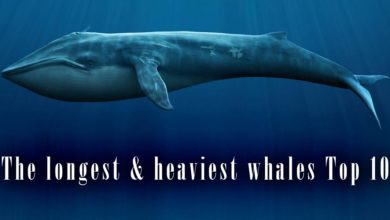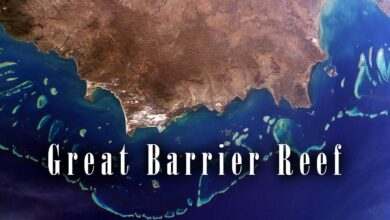Iguanodon – one of the first dinosaurs discovered
Iguanodon bernissartensis
The discovery of large fossilized bones revealed that once upon a time there lived in the world unusual, large and unknown reptiles. These animals were baptized by the famous English anatomist and palaeontologist Richard Owen (1804-1892), who in 1842 gave them the scientific name Dinosauria.
Richard Owen formed the name Dinosaurs (Dinosauria) from the Greek words deinos (terrible, terrifying) and sauros (reptile, lizard). Among the dinosaurs, Owen included three inaccurately known forms of land animals that differ significantly from modern reptiles. At first, Owen treated the dinosaurs as one row. In 1887, however, Harry Govier Seeley divided the dinosaurs into two separate lines based on the structure of the pelvic bones:
- Saurischia
- Ornithischia
This division is still recognized today.

Today, the major groups of dinosaurs are:
- †Herrerasauridae
- †Sauropodomorpha
- Theropoda
- †Ornithischia
In an earlier article, we have already presented Cetiosaurus, today we present one more dinosaur, the discovery of which initiated the era of the search for dinosaurs: the herbivorous Iguanodon and soon we shall present the predatory Megalosaurus.
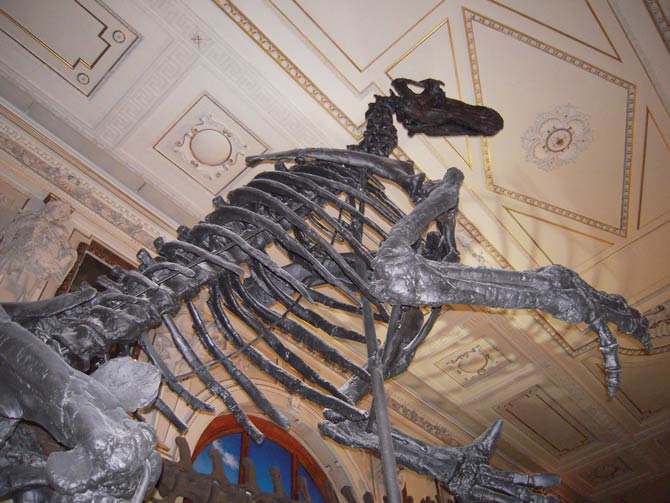
Iguanodon – a cow of the dinosaur period
History of discovery
Fossil bones of Iguanodon are the first reliably assignable dinosaur fossils ever found. As early as 1809, the geology pioneer William Smith collected the fragment of a large tibia in the Cuckfield area of Sussex during his explorations of the geology of Great Britain. For more than 150 years the piece lay largely unnoticed in the collection of the Natural History Museum in London and was not identified as a remnant of Iguanodon until 1970.
Characteristics
The Iguanodon (Iguana = iguana + odon = tooth – “iguana tooth”) was a large, heavy ornithopod living in large herds that harvested plants with its horn beak and chewed the plants through an unusual jaw movement mechanism. Equally peculiarly and specialized were his five-finger “hands”, with a spiked thumb, three middle fingers tipped with hooves, and a catching fifth finger.
Representatives of the only species that undoubtedly belongs to the genus of iguanodons, Iguanodon bernissartensis , had an average weight of about 3 tons and an average body length of up to 10 meters; the length of some individuals reached 13 meters. They had large and narrow skulls, a beak made of keratin in the front of their jaw, followed by teeth similar to those of an iguana , but larger and more frequent .

The way of moving – two or four-legged
The early fossils were only partially preserved, which made it possible only to speculate about the mode of movement and nature of the iguanodons. Initially, these dinosaurs were depicted as four-legged animals with a horn on their nose, but when more bones were found, Mantell noticed that the forelimbs of the iguanodon were noticeably shorter than the hind ones. His rival, Sir Richard Owen, held the theory that they were dinosaurs with four pillar-like legs. After the discovery of a large number of skeletons near the Belgian city of Bernissart, scientists again reconsidered the way the iguanodon moved – now it was portrayed as a two-legged dinosaur – like kangaroo.
Iguanodon was probably a quiet herbivore who could stand and walk on both two and four legs. Juveniles, with rather short front legs, were rather bipedal.
Adults, on the other hand, had longer and stronger forelimbs, so they could support themselves with the middle three fingers of “hands” when they were bending over at a waterhole or grazing. The fact that adult individuals sometimes moved in a four-legged position are also evidenced by some of their tracks.
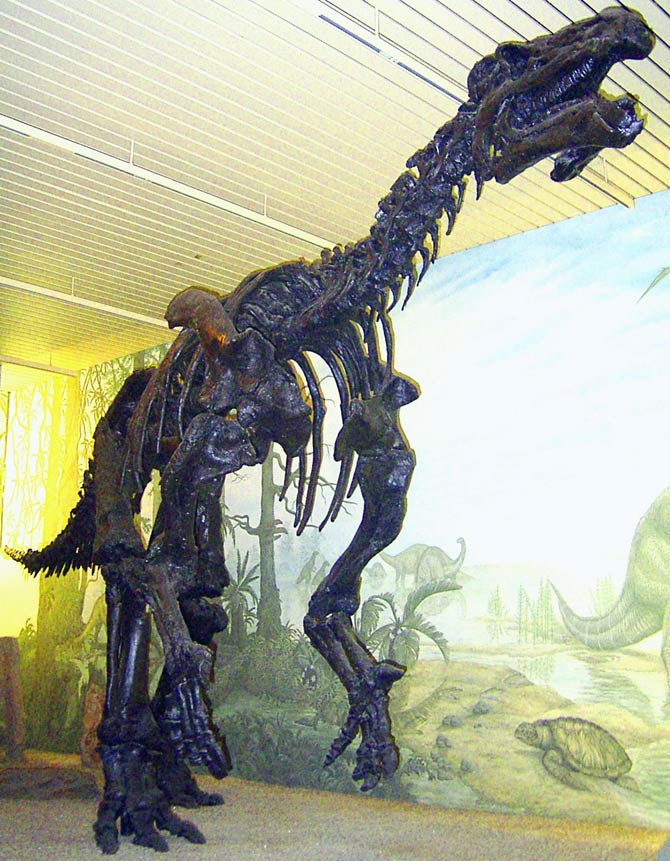
Diet
The exact diet of the iguanodon is unknown. The size of dinosaurs like I. bernissartensis gave them access to any food from ground level to 4-5 meters in height. It is a theory that iguanodons ate horsetails , cycads and conifers, although there is reason to believe that the diet of this dinosaur was associated with the first angiosperms of the Cretaceous period. According to this hypothesis, because iguanodons ate them, the first angiosperms grew very rapidly, gradually replacing all other plants. However, no unambiguous proof of this has yet been found. Regardless of its diet, the size of the iguanodon makes it the dominant medium to large herbivore in its ecosystem.
Teeth
As its name suggests, the Iguanodons teeth were similar to those of an iguana, but were large. Unlike their related hadrosaurs , iguanodons have changed teeth only once in their entire life. The upper jaw had 29 teeth on each side, the premaxilla had no teeth, and the lower jaw had 25 teeth. The large difference between the number of teeth on the jaws was explained by the fact that the teeth on the lower jaw had a much wider width than on the upper one.

Detailed data / dimensions (size)
Iguanodon
Size:
- Length: 8-10 m (max. 13 m)
- Weight: 3 – 5 tons
Lived:
- 126-122 million years ago
Era:
- Early Cretaceous
Food:
- plants
Occurrence:
- Western Europe, Central Europe, Romania, North America, North Africa, Mongolia.
Classification
- Kingdom: Animalia
- Phylum: Chordata
- Clade: Dinosauria
- Order: †Ornithischia
- Suborder: †Ornithopoda
- Family: †Iguanodontidae
- Genus: †Iguanodon
- Species:
- †Iguanodon bernissartensis
- †Iguanodon anglicus (nomen dubium)
- †Iguanodon bernissartensis
- †Iguanodon galvensis
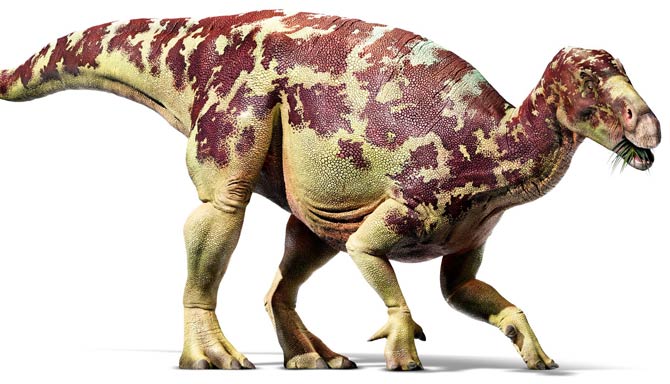
Recommended
- The longest dinosaurs. Sauropods Top 10
- The heaviest dinosaurs – Top 10
- The longest predatory dinosaurs. Theropods Top 10
- The heaviest predatory dinosaurs Top 10
- The longest Ornithischians (Ornithischia) TOP 10
- The heaviest Ornithischians Top 10
- The largest raptors (dromaeosaurs) Top 10
- The heaviest Dromaeosaurids / dromaeosaurs – Top 10
- The longest Ankylosaurus Top 10
- The heaviest Ankylosaurus Top 10
- The longest ceratopsians
- The heaviest cerapsians
- The longest and largest ornithopods
- The heaviest ornithopods Top 10
- The longest Stegosaurians (Stegosauria) TOP 10
- The heaviest Stegosaurians (Stegosauria) Top 10
- The smallest sauropods Top 10
- The smallest dinosaurs Top 10
- The largest pterosaurs Top 10
- Dinosaurs
- Dinosaurs database
- Predatory dinosaurs
- Animals & dinosaurs records
- The fastest animals – Top 100
- The fastest birds – Top 10

